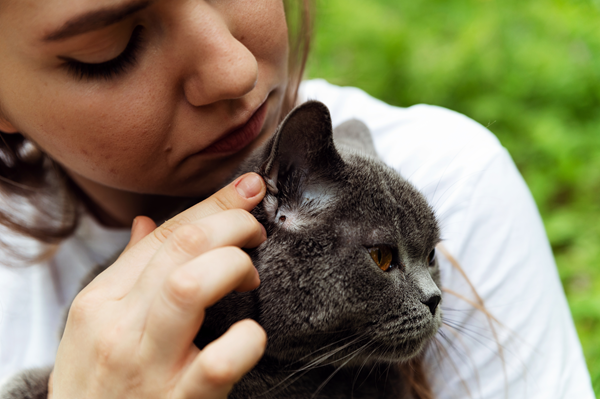
Would you recognize tick-borne disease in your pet?
Tick-borne diseases often look like any other disease at first. Your cat or dog may seem sleepy, not want to play as much or as enthusiastically, may have a reduced appetite or fever.
With such subtle signs, diseases carried by ticks such as Rocky Mountain spotted fever, Lyme disease, cytauxzoonosis, anaplasmosis, and ehrlichiosis may be missed – until your pet becomes severely ill or suffers irreversible organ damage. And it only takes one bite by an infected tick.
So, what is your role in reducing the risk of your pet being infected with these diseases? Tick prevention. And this isn’t easy.
Regular Examination and Removal of Ticks
This is easier said than done. Many ticks are incredibly small – some no larger than the size of a poppy seed. Do you really think you would spot every tick on your dog or cat to remove it before it has a chance to spread disease? Ticks can also crawl inside the ears and other orifices and be easily missed.
Ticks also spread disease at varying rates. While Lyme disease or cytauxzoonosis generally require ticks to be attached for at least 24 hours or more to spread, other diseases like Rocky Mountain spotted fever and ehrlichiosis can spread much faster. You would need to check your pets frequently through the day to have a chance at removing all of them before disease transmission.
Environmental Control
Ticks aren’t just a deep woods problem – they can be found in parks, gardens, and other urban spaces. Ticks thrive in leaf piles, tall grass, and shady spots.
And don’t think the winter will be tick-free. Some tick species can be active if ground temperatures are above 32°F (0°C), something that can happen even on very cold days if the area is exposed to direct sun or warm exhaust and is shielded from the wind.
Tick-proof your yard as much as possible: remove leaf piles, mow grass frequently, and don’t leave trash in the yard that could make a good tick home. If you live near woodland, separate your yard from it by a 3-foot-wide layer of wood chips or gravel to minimize tick movement into your yard.
Tick Prevention Products
There are many products on the market to prevent fleas and ticks. Some products are sold over-the-counter and some are prescription. It’s best to talk to your veterinarian about options for your pet based on your lifestyle and preferences. Many products that are sold over-the-counter aren’t as effective as they claim, and some can be harmful to your pet.
Prescription products are generally safe when recommended by your veterinarian and when manufacturer guidelines are followed; if they weren’t, the federal authorities that approve these products for safe and effective use would remove them from the market. Rarely, side effects can occur and may include skin irritation, vomiting, diarrhea, tremors, or seizures. Any such effects should be reported to the manufacturer and your veterinarian so they can discuss altering your pet’s tick prevention plan.
Although scary, the risk of severe side effects is low and is outweighed by the higher risk of a pet getting a potentially deadly or life-altering tick-borne disease.
A Growing Problem
Ticks aren’t going away any time soon and the percentage that carry infectious disease is increasing. And don’t forget – if a tick can spread disease to your pets, it can also spread disease to you. Most species of ticks don’t care if it’s a dog, cat, or human they feed on, so follow public health recommendations to keep yourself safe too.

